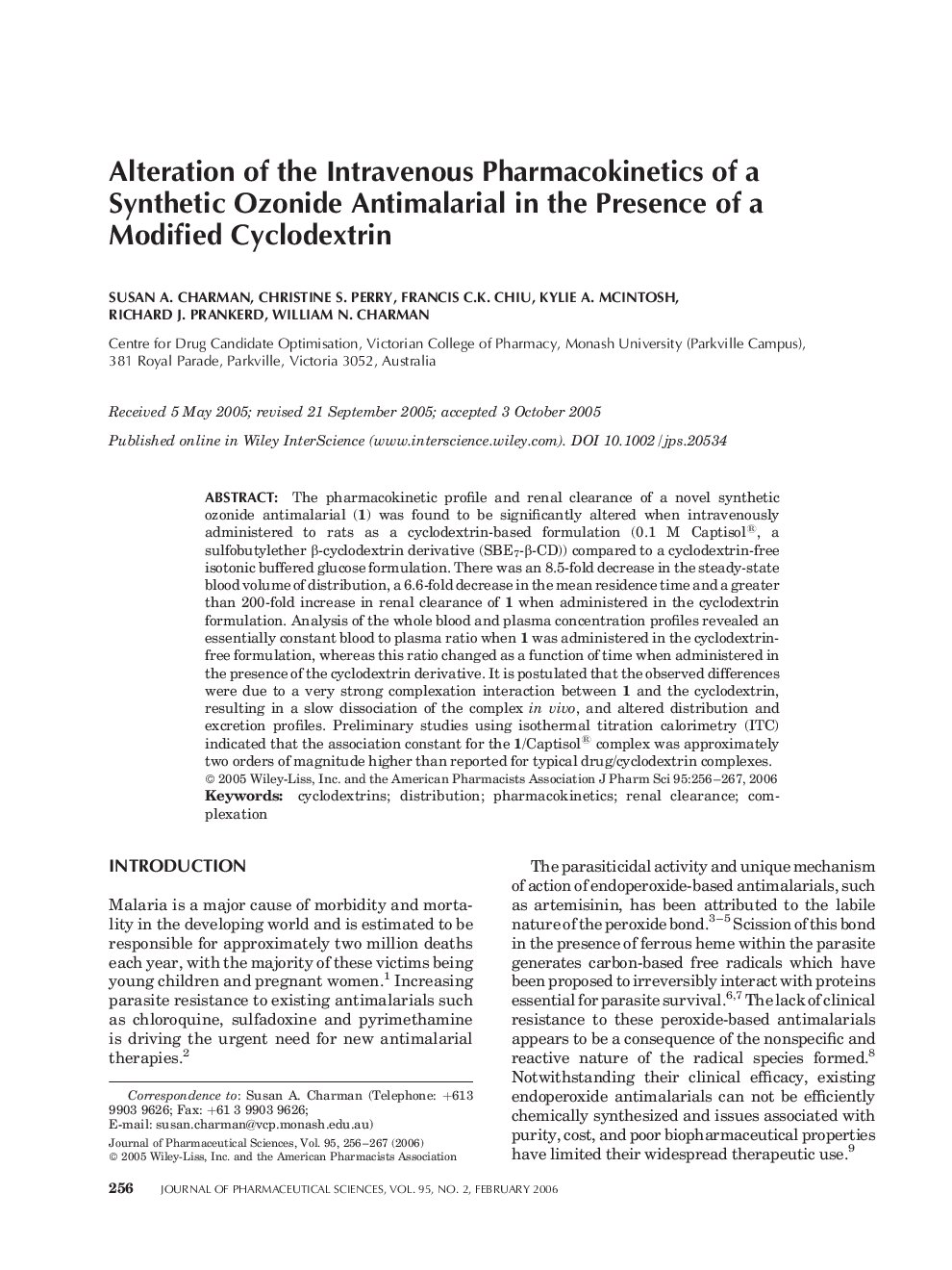| Article ID | Journal | Published Year | Pages | File Type |
|---|---|---|---|---|
| 2487152 | Journal of Pharmaceutical Sciences | 2006 | 12 Pages |
Abstract
The pharmacokinetic profile and renal clearance of a novel synthetic ozonide antimalarial (1) was found to be significantly altered when intravenously administered to rats as a cyclodextrin-based formulation (0.1 M Captisol®, a sulfobutylether β-cyclodextrin derivative (SBE7-β-CD)) compared to a cyclodextrin-free isotonic buffered glucose formulation. There was an 8.5-fold decrease in the steady-state blood volume of distribution, a 6.6-fold decrease in the mean residence time and a greater than 200-fold increase in renal clearance of 1 when administered in the cyclodextrin formulation. Analysis of the whole blood and plasma concentration profiles revealed an essentially constant blood to plasma ratio when 1 was administered in the cyclodextrin-free formulation, whereas this ratio changed as a function of time when administered in the presence of the cyclodextrin derivative. It is postulated that the observed differences were due to a very strong complexation interaction between 1 and the cyclodextrin, resulting in a slow dissociation of the complex in vivo, and altered distribution and excretion profiles. Preliminary studies using isothermal titration calorimetry (ITC) indicated that the association constant for the 1/Captisol® complex was approximately two orders of magnitude higher than reported for typical drug/cyclodextrin complexes. © 2005 Wiley-Liss, Inc. and the American Pharmacists Association
Related Topics
Health Sciences
Pharmacology, Toxicology and Pharmaceutical Science
Drug Discovery
Authors
Susan A. Charman, Christine S. Perry, Francis C.K. Chiu, Kylie A. McIntosh, Richard J. Prankerd, William N. Charman,
